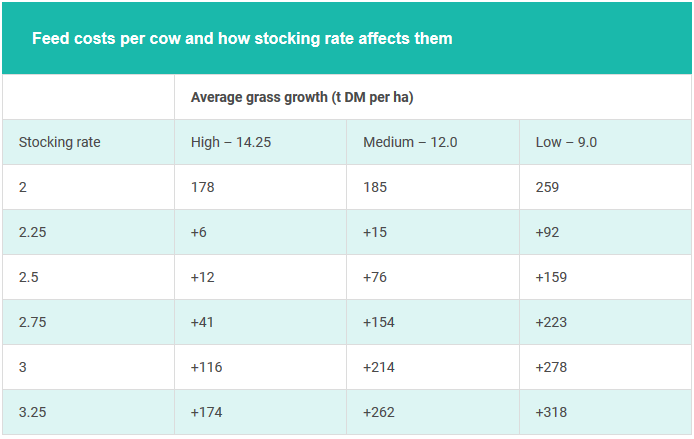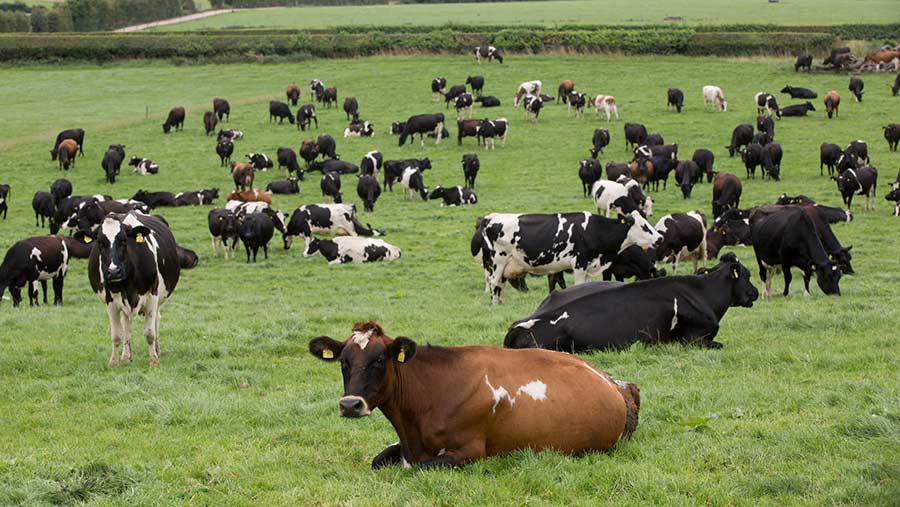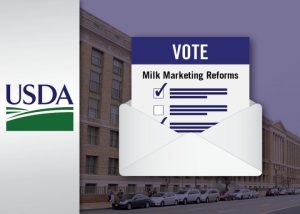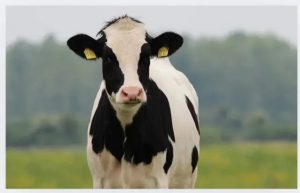As farms vary in size, layout, grass growing ability and factors such as labour availability, appropriate stocking rates can also vary from farm to farm. But chasing cow numbers and production could actually be damaging the bottom line.
Brendan Horan, a research officer at Irish Agriculture and Food Development Authority Teagasc, talks through a report put together by technologist Donal Patton that outlines some of the factors that affect optimum stocking density.
See also: Irish dairy farmers explain how once a day milking is profitable for them
What is the objective of a good stocking rate?
The report says that stocking rate decisions should be made with the dual objective of maximising grass utilised per farm hectare and achieving a milk solids output per cow of more than 80% of their liveweight.
Mr Patton says that quoting a farm stocking rate as a simple ration of cows per milking platform hectare can be misleading, he says:
“Increasing SR beyond what the farm can grow will increase costs of production and results in the farming business becoming more exposed to input and output price volatility.”
Instead, decisions should be based on:
Annual grass production
Soil type
Cow type
Fixed costs
Labour structures
What affects the right stocking rate?
1. Grass production
Grass production is a huge influencer on the optimum farm stocking rate and varies hugely across farms. Teagasc on-farm monitoring shows:
° a range in annual grass production from less than 8t DM/ha to more than 15 t DM/ha
° if total forage intake for a 550kg yielding 440kg milk solids is approximately 4.7t DM a year, the lower grass producers would support stocking rates of 1.5LU/ha and the higher grass producers would support around 2.7LU/ha.
Increasing the stocking rate on a milking platform can help to grow more grass but only if soil fertility, reseeding, grass budgeting and nitrogen are managed correctly.
Mr Horan says that disciplined management of pasture cover at calving, rotation lengths, grazing residuals and supplement usage is key to ensuring the stocking rate is right for the farm.
Increasing the stocking rate too far will reduce the length of the grazing period and possibly increase the fertiliser usage, concentrate supplementation and nitrate losses.
“We need to think of stocking rate as a balance – between what we are growing and what we can utilise,” says Mr Horan.
Explore moreKnow How
This means looking at the rate of pasture growth and the rate of pasture utilisation.
2. Milk response to stocking rate
The key point in milk response is that where there are no limiting factors in terms of pasture supply, increasing stocking rate will increase milk output per cow and per hectare. However, beyond the point of maximum pasture utilisation, increasing stocking rate will mean declining milk solids per cow and per hectare. This is because of cow maintenance requirements and may result in lower body condition score and fertility issues, unless there is supplementation.
Mr Patton suggests that as a general guideline, the system should provide adequate feed to allow the herd to produce more than 80% of their liveweight as milk solids annually, otherwise the proportion of total feed being used for maintenance is too high.
3. Herd feed demand and forage availability
“There is a real risk in the new milk production environment that many farms will drift into higher-cost open systems to feed expanded dairy herds, while simultaneously failing to manage fundamentals of grass production on the grazing platform,” Mr Patton reports.
He says the risk here is the lack of cost competitiveness and amount of external land required to meet total herd demand (see table for example).
The ‘open system’ referred to is where herd demand exceeds growth capacity of the grazing platform meaning 20% or more of the forage budget is imported.
Typically, costs will rise by 1.5-2.5c/litre (1.3-2.2p/litre) for every 10% of extra imported feed, Mr Patton advises.
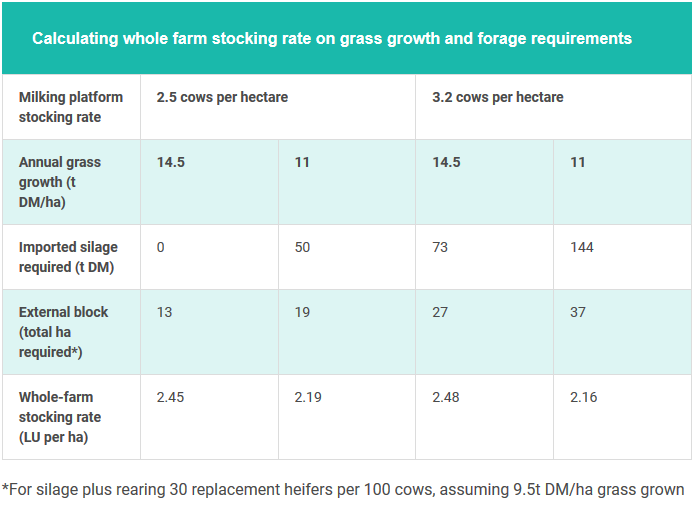
CSR – the comparative farm stocking rate
The CSR is kg of liveweight per tonne of feed available (including supplements).
A CSR of 90 kg/t DM is a reasonable target for maximising efficiency of milk solids production.
Lower indicates wastage of feed and higher indicates the herd is underfed.
The key question to ask when considering increasing cow numbers, is how will they be fed? Is there surplus feed already available on the farm or will it need to be bought?
If the stocking rate and grassland capacity are already well matched, increasing cow numbers will mean it will be necessary to buy in more feed.
Taking the current average profit per cow and multiplying this by the number of cows you plan to have is the wrong approach because it does not account for extra feed costs.
See also: The results of a New Zealand trial on the value of feeding supplements to get more litres
Mr Patton has shared the effect of stocking rate on feed costs per cow (€) at different grass growth rates, in the below table:
